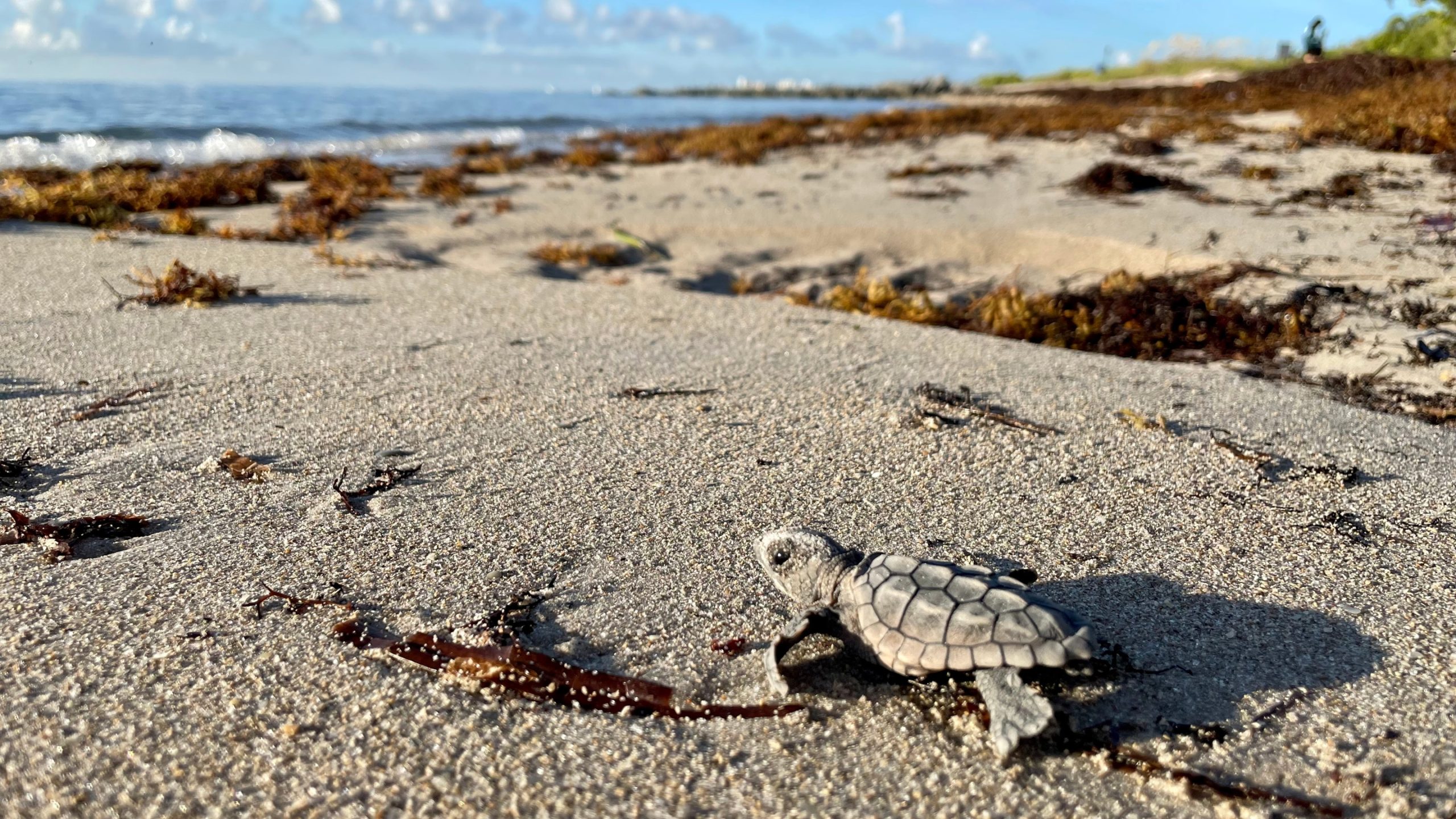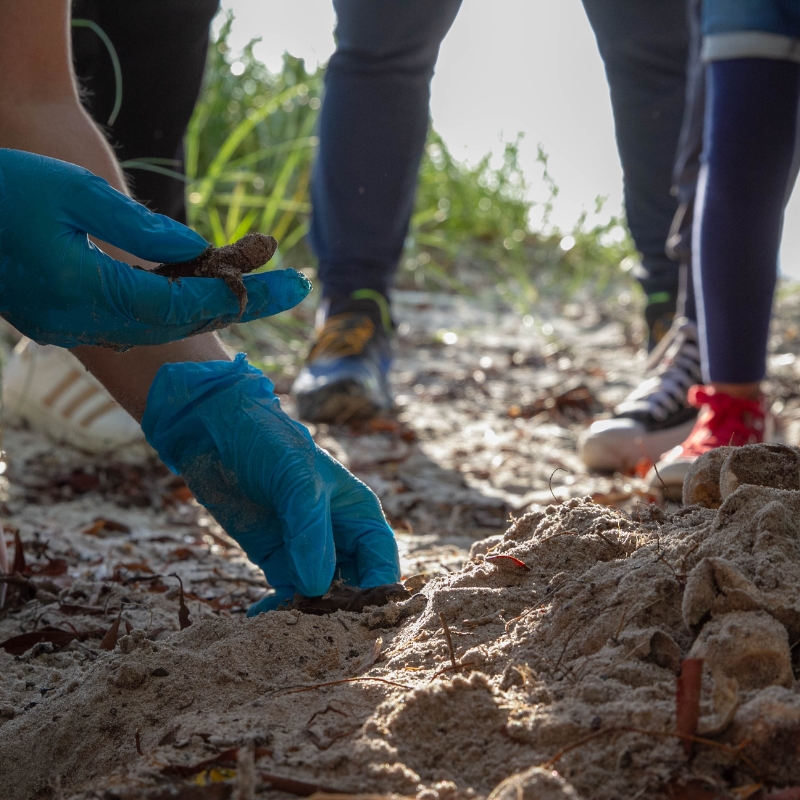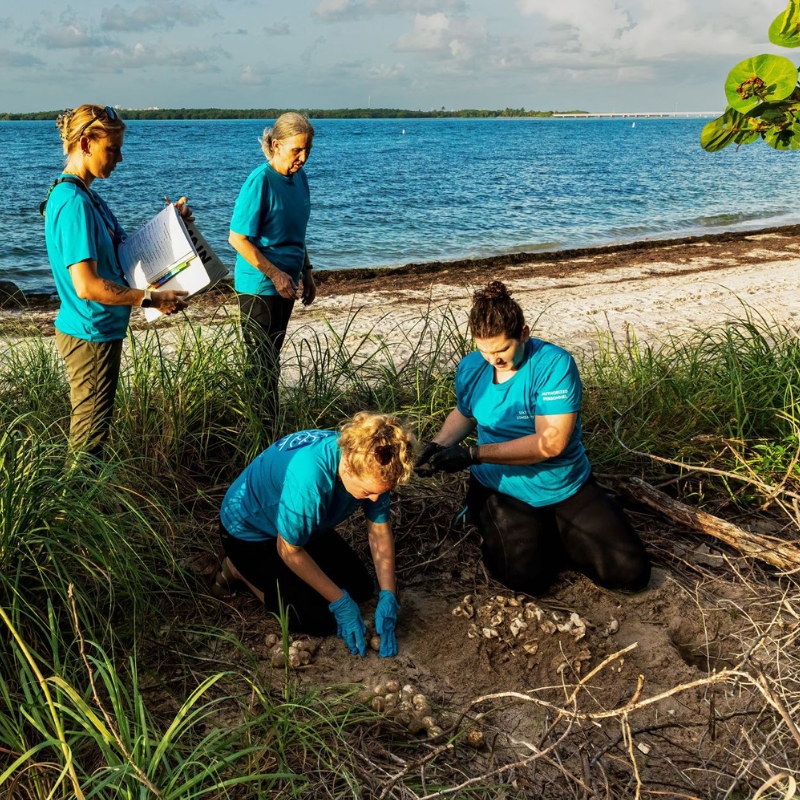
Loggerhead turtles are Florida’s most common sea turtle species, and our state is the center of the largest loggerhead turtle nesting aggregation in the world. Simply put we have a lot of loggerhead turtles around during nesting season! However, they’re not always easy to spot, since sea turtles generally nest and hatch between dusk and dawn.
This year, to give Miami-Dade County residents a chance to witness sea turtle nesting activities in-person, Frost Science has unveiled an exciting new program. NEST (Nest Excavation for Sea Turtles) is a limited-edition outreach program that invites participants to learn about sea turtle nesting in South Florida and watch a live sea turtle nest excavation. This unique interactive opportunity gives people a chance to see the world of sea turtle conservation with their own eyes.
NEST is offered in partnership with MORAES, the Marine Order for Research and Action through Environmental Stewardship. MORAES is a local environmental non-profit that aims to protect South Florida’s marine resources through collaborative community involvement and environmental stewardship. They run the sea turtle nesting program on Virginia Key and survey the beach every morning during nesting season, monitoring for sea turtle activity and collecting data for the Florida Fish and Wildlife Conservation Commission (FWC).
MORAES holds a marine turtle permit (FWC marine turtle permit #153), which allows them to both excavate nests for scientific purposes and to run public nest success evaluations for educational purposes. During NEST events, Frost Science education experts work together with MORAES sea turtle experts to teach the public about loggerhead turtles and their conservation.

“It’s an exciting opportunity,” says Frost Science Assistant Director of Education Analisa Duran. “NEST is sometimes the first time someone learns that sea turtles nest in Miami and it is usually the first time they are hearing about all the threats that nesting sea turtles face.” Duran is also involved with MORAES as the sea turtle nesting permit holder, so the NEST programs allow her to combine two of her passions into one initiative.
Timing is everything for NEST programs. Per the FWC, nest excavations are only allowed 72 hours after a nest hatch to allow stragglers, or hatchlings, that did not immediately emerge time to leave the nest naturally. So, NEST programs are scheduled three days in advance—participants must be on their toes!
Once participants arrive, the programming starts with Frost Science outreach staff leading them through a sea turtle board game and a rousing round of sea turtle trivia. Then, the group heads to the beach where they meet up with MORAES sea turtle conservationists at the recently hatched nest. The MORAES team is there to gather scientific data for FWC on nesting success, including how many eggs were laid and how many hatched. While the MORAES experts excavate the nest—literally, digging into the sand with their hands and pulling out empty eggshells and the odd unfertilized egg—they tell NEST participants about what they are doing and seeing, and field their questions.

Although not guaranteed, finding a straggler turtle is the one of the most exciting possibilities at a NEST program. These hatchlings are removed from the nest and kept in a safe place so MORAES can release them at the end of the excavation. Just one in every 1,000 sea turtle hatchlings survive to adulthood, so every young turtle matters. NEST participants get to watch these straggler turtles make their way to the ocean, a big journey for such small turtles.
Frost Science hopes people are inspired to protect sea turtles after attending a NEST program by doing things like turning off lights along the beach at night and picking up trash they spot in the sand that can prevent hatchlings from making their way to the water. Says Duran, “Education is the first step in conservation and through the NEST program, we can give participants the opportunity to get a first-hand look at sea turtle conservation in South Florida.”